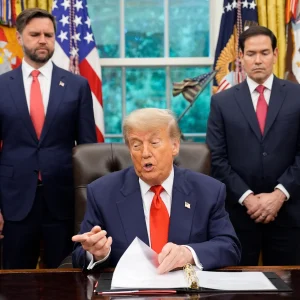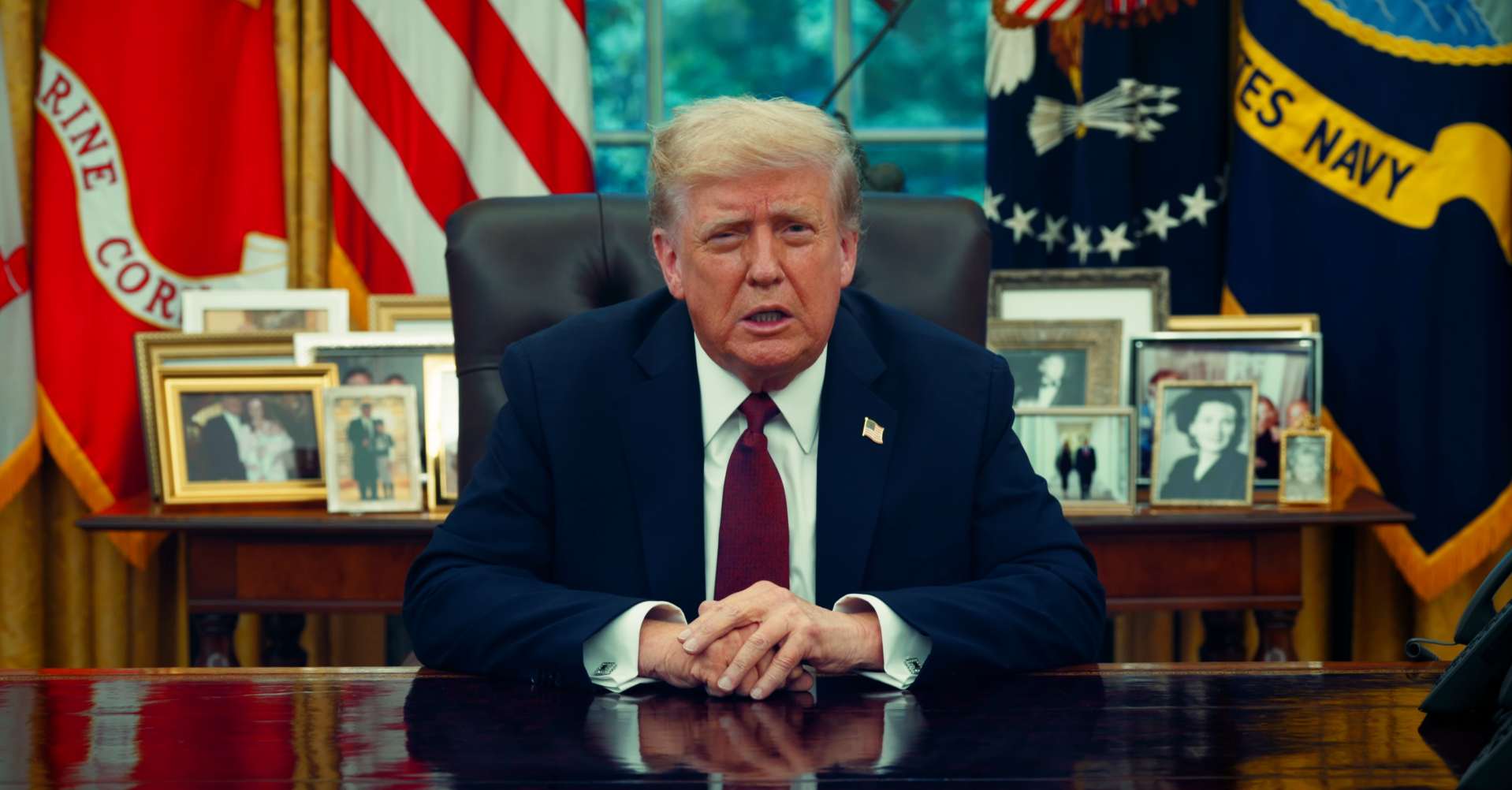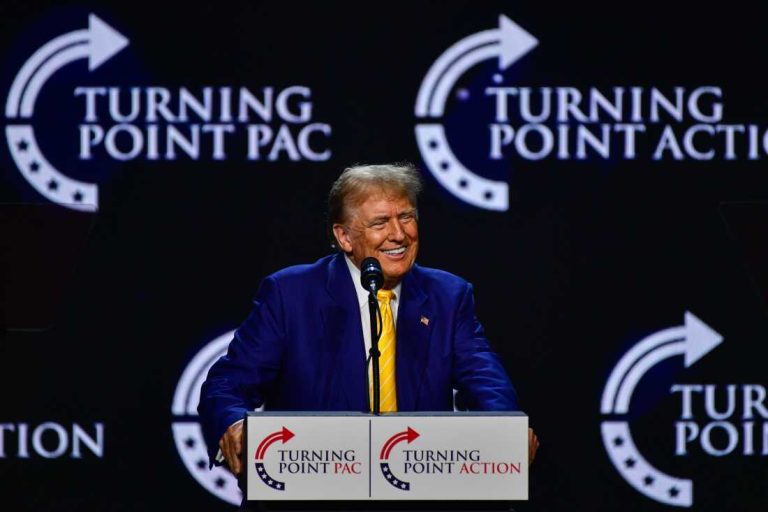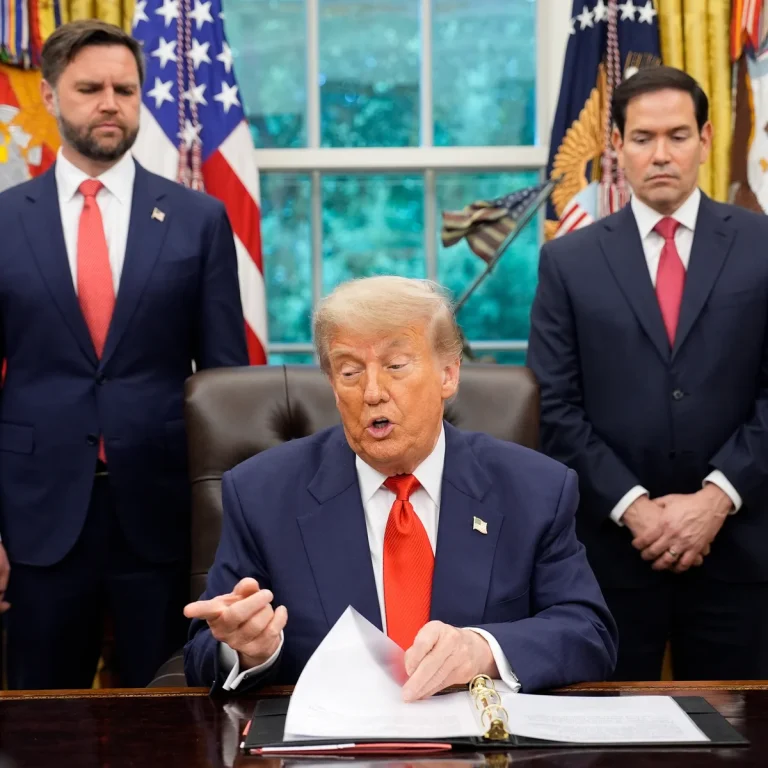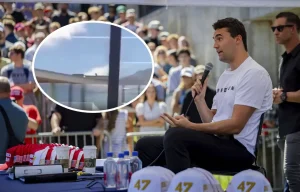The death of conservative activist Charlie Kirk, who was fatally shot at a Utah Valley University event, has not only plunged the United States into grief but has also fueled a wave of controversy over how the tragedy is being addressed publicly. While President Donald Trump sought to calm the nation and condemn political violence in a video statement from the White House, online observers quickly zeroed in on an odd detail: his pinkie finger appeared to briefly vanish.
The moment, captured around the 19-second mark of the address, triggered widespread speculation that the footage was AI-generated or otherwise manipulated. The strange glitch overshadowed much of the content of Trump’s message, raising questions about technology, trust, and transparency in the highest levels of government communication.
The Assassination of Charlie Kirk
On September 11, 2025, Charlie Kirk, co-founder of Turning Point USA, was speaking before a crowd of roughly 3,000 people at Utah Valley University when tragedy struck. Witnesses report that Kirk was engaging in a Q&A session when a single shot rang out. The bullet struck him in the neck. Despite immediate emergency medical attention, Kirk was later pronounced dead at a nearby hospital.
Authorities confirmed that the shot was fired from a rooftop overlooking the event. Surveillance video appeared to show a figure on one of the university buildings, followed by someone fleeing the scene. While two people were initially detained, police later determined they had no ties to the attack. The shooter remains at large, and investigators say multiple crime scenes are being analyzed to track the suspect’s movements.
Officials, including Utah’s governor and federal law enforcement, have described the killing as a “political assassination.”
Trump’s Video Address
In the wake of Kirk’s death, President Trump delivered a solemn video message from the White House, calling the assassination “a dark moment for America.” He described himself as “filled with grief and anger at the heinous assassination of Charlie Kirk,” adding:
“He inspired millions and tonight all who knew him and loved him are united in shock and horror. We must never allow political violence to poison our country. We will pursue justice with every resource available, and we will prevail.”
Trump also directed his anger toward the “radical left,” a framing that echoed themes from his earlier political speeches. The message was shared across official social media accounts and quickly garnered millions of views.
The “Disappearing Finger”
Within hours of the video’s release, sharp-eyed viewers began posting slowed-down versions of the footage on X (formerly Twitter), highlighting what appeared to be a strange glitch. Around the 19-second mark, Trump’s pinkie finger seemed to vanish and then reappear, leading some to speculate the video was not genuine.
“Pretty sure this is AI,” one user wrote, while another exclaimed, “Uhhhhhhh guys why are they deepfaking the president?”
The theory gained momentum as multiple clips circulated showing the anomaly in different resolutions and playback speeds. To some, it was evidence that the White House had used an artificial intelligence tool to generate or manipulate the president’s message.
Experts Weigh In
Not everyone was convinced by the AI theory. Some professional video editors and filmmakers offered alternative explanations.
One editor explained:
“It could also be a transform cut. I’ve used that before when I need to cut out an ‘um’ or a cough, and the shots on either side of that are so almost identical that they can be spliced together. It can look wonky like that.”
Others pointed to the possibility of heavy color correction or lighting changes that could create visual oddities. Another suggested a reflection or artifact in the background might have caused the illusion of the disappearing finger.
Still, the speculation persisted, with skeptics arguing that regardless of the cause, the visual glitch was distracting and eroded confidence in the authenticity of official statements.
Political and Public Reaction
The debate over Trump’s video comes at a time of heightened sensitivity in American politics. The assassination of a nationally known conservative figure has already amplified tensions, and the suggestion — even unfounded — that the president’s response was artificially generated only deepens public mistrust.
Supporters of Trump dismissed the AI claims as conspiracy theories meant to distract from his strong condemnation of Kirk’s assassination. Detractors, meanwhile, seized on the glitch as symbolic of a broader crisis of credibility in digital media.
For many Americans, the controversy illustrates how fragile public trust has become in the era of deepfakes, AI tools, and manipulated media.
A Dark Moment for America
Lost amid the speculation is the gravity of the moment. Charlie Kirk’s death has shaken political circles across the spectrum. Leaders from both parties, including Speaker Mike Johnson and Minority Leader Hakeem Jeffries, condemned the assassination and called for unity against political violence.
Former presidents Barack Obama and Joe Biden also issued statements urging Americans to reject hatred and honor democratic traditions.
For Kirk’s family — his wife Erika and their two young children — the tragedy is deeply personal. Erika Kirk, who hours before the assassination had posted a prayerful message on social media, now faces an unimaginable loss.
Conclusion
Donald Trump’s video address was intended to provide comfort and resolve in the wake of a shocking political assassination. Instead, it has become a case study in how technology, perception, and trust intersect in modern political communication.
Whether the “disappearing finger” was a glitch, an editing artifact, or something more, the debate underscores a larger challenge: Americans are increasingly unsure whether to believe what they see on their screens.
As the nation grieves the loss of Charlie Kirk and authorities continue the search for his killer, the controversy surrounding Trump’s address serves as a reminder that in moments of crisis, clarity and credibility are more essential than ever.
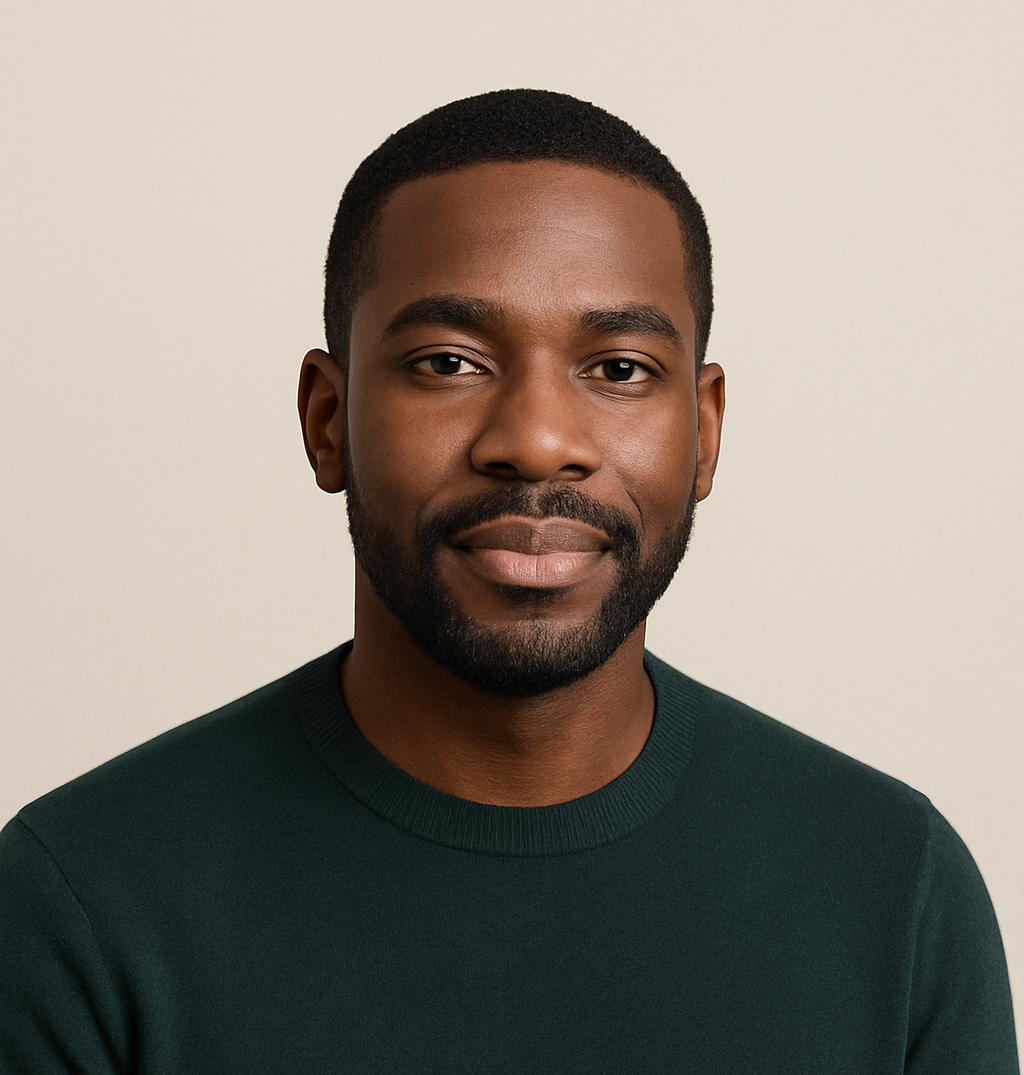
James Jenkins is a celebrated Pulitzer Prize-winning author whose work has reshaped the way readers think about social justice and human rights in America. Raised in Atlanta, Georgia, James grew up in a community that instilled in him both resilience and a strong sense of responsibility toward others. After studying political science and creative writing at Howard University, he worked as a journalist covering civil rights issues before dedicating himself fully to fiction. His novels are known for their sharp, empathetic portraits of marginalized communities and for weaving personal stories with broader political realities. Jenkins’s breakout novel, Shadows of Freedom, won national acclaim for its unflinching look at systemic inequality, while his more recent works explore themes of identity, resilience, and the fight for dignity in the face of oppression. Beyond his novels, James is an active public speaker, lecturing at universities and participating in nonprofit initiatives that support literacy and community empowerment. He believes that storytelling is a way to preserve history and inspire change. When not writing, James enjoys jazz music, mentoring young writers, and traveling with his family to explore cultures and stories around the world.


